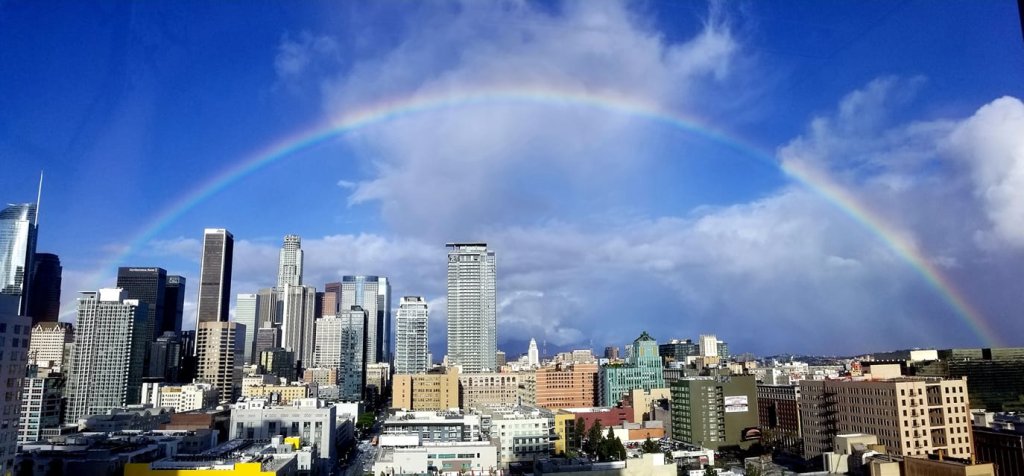Despite most public assumptions, Los Angeles County leads the nation with the highest concentration of military veterans calling it home. The female veteran-led Los Angeles Veterans Collaborative (LAVC), stands ready to serve them.
According to their website, LAVC is a structured network of public, private and government agencies working together to reduce suffering and improve the lives of veterans, service members and military families in LA County. Along with the collaborative efforts of 300 organizations and resources housed under LAVC, the initiative is working towards policy changes that could further positively impact veterans.
The foundation or backbone for the LAVC is Southern California Grantmakers, which has programming led by two female veterans determined to change the landscape for veterans as they transition or find themselves in need of support.
Directing LAVC is Air Force Reserves Master Sgt. Aimee Pila-Bravo. But her passion for serving veterans goes beyond her connection as a military service member herself. It started after watching her brother, a Marine, struggle and not receive the help he needed. He eventually attempted to commit suicide while still on active duty.
“There were a lot of incarcerations and hospitalizations and he had a lot of problems that weren’t being addressed,” Bravo explained. Inspired by a social worker that was finally able to help her brother, she decided to become one herself.
After leaving active service for the reserves to earn her master’s degree in social work, she knew she wanted to impact the lives of those who serve and have served.
“If someone could help my brother through that process then I want to be able to do it for others,” Bravo said. “I just recognize that there is a lot of help that needs to be given. I would prefer that they get that help while they are still in, before they get to us.”
Life after leaving active duty service is a shock to many veterans, with the added confusion of where to go and what’s available, Bravo said. Although each branch offers a class before the member begins terminal leave, she said it leaves many more confused than when they started. LAVC aims to make it as seamless as possible to set them up for success.
Cristina Garcia is the Director for the Veteran Peer Access Network, which is part of Southern California Grantmakers, as well. The program connects county departments, non-profits, the VA and LA City programs, making navigation simpler for the veteran. It is led by veterans for veterans, giving them a battle buddy as they begin their journey after the military.
A 24-year veteran of the United States Army, Garcia ended her career in the California Army National Guard working in diversity and immigration, retiring as a 1st Sgt. Her role at the end of her career would create a drive and purpose to continue to find ways to ensure all veterans received the care and resources they needed.
“It really gave me a sense of worth and satisfaction to help those soldiers, families and the community,” Garcia explained.
That drive and passion for service led her new role and she hasn’t looked back since. “We, as veterans, we know what’s out there. We get it, but when you hit those bumps and there’s no one to help, you kind of go into a downward spiral from there. That’s why this program is so low barrier,” Garcia said.
Bravo echoed that sentiment but also knows that what they are doing is only the beginning of what’s needed to truly support veterans. “It’s a great start but it isn’t enough. It won’t be enough until we champion for change within the military itself,” she said. “It’s something that we need to work on and it’s a conversation that just can’t stop.”
Another unique point about LAVC is that the organization works with all veterans regardless of discharge and their families, making them standout as a valuable resource and initiative. “That’s why the program is so important and needed here in Los Angeles County,” Garcia said.
For an area like LA that has such a large concentration of veterans, Bravo and Garcia hope to set the standard for programming elsewhere in the country. With the Veterans Administration backlogged with needs and the recent uptick in service member and veteran suicides, initiatives like LAVC are an important piece of the solution.
Both women said they are proud of where the program is going and grateful to all of the organizations joining forces to serve and make a difference.
“We are here to inform, educate and make sure we give them that warm hug like – come here,” Bravo said. “It’s not ‘poor veteran’ either. Instead, it’s we know it’s going to be hard but that’s okay. We’re here.”
To learn more about LAVC, click here.
Feature image courtesy of LAVC’s Facebook page





